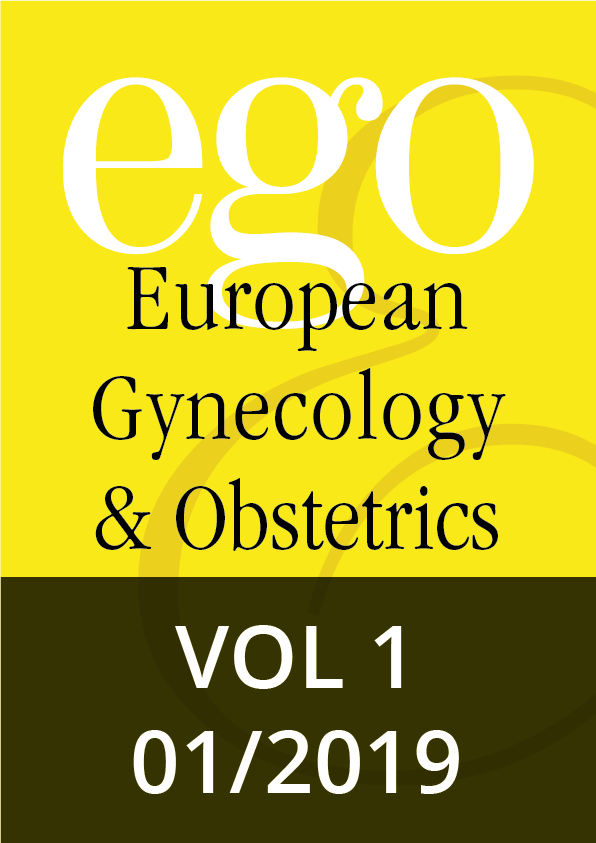In memoriam, 002–002
Editorial, 003–003 | DOI: 10.53260/ego.191011
Reviews, 005–009 | DOI: 10.53260/ego.191012
Reviews, 010–017 | DOI: 10.53260/ego.191013
Reviews, 018–023 | DOI: 10.53260/ego.191014
Case reports, 024–026 | DOI: 10.53260/ego.191015
Case reports, 027–028 | DOI: 10.53260/ego.191016
Original articles, 029–033 | DOI: 10.53260/ego.191017
Original articles, 034–038 | DOI: 10.53260/ego.191018
Original articles, 039–042 | DOI: 10.53260/ego.191019
Original articles, 043–047 | DOI: 10.53260/ego.1910110
Original articles, 048–050 | DOI: 10.53260/ego.1910111
Original articles, 051–054 | DOI: 10.53260/ego.1910112
Original articles, 055–060 | DOI: 10.53260/ego.1910113
Bone density and body weight is associated with MTHFR677 polymorphism in girls with anorexia nervosa
Original articles, 061–064 | DOI: 10.53260/ego.1910114
Re-conceptualizing fetal monitoring
Abstract
Electronic fetal monitoring (EFM) has been used extensively in labor for over 40 years despite its appreciated failure to identify, in a timely fashion, and help prevent a large proportion of cases of neonatal encephalopathy and cerebral palsy. Our analysis suggests that the poor performance of EFM derives from a fundamental misunderstanding of the differences between screening and diagnostic tests, large inter-observer variability in its interpretation as a result of very subjective classifications, failure to follow the physiology of fetal compromise, and poor statistical modeling for its use as a screening test. We have recently developed a new methodology, the fetal reserve index (FRI) which contextualizes the interpretation of EFM by 1. breaking EFM down into four components: heart rate, variability, accelerations, and decelerations; and then 2. adding increased uterine activity, and 3. risk factors (maternal, fetal, and obstetrical) to create an 8-point algorithm. In a direct comparison of the ACOG monograph criteria, ACOG Category system and the FRI, the FRI performed much better in identifying cases at risk before damage had occurred, and reduced both the need for emergency deliveries and overall Cesarean delivery rates.
Keywords: cerebral palsy, electronic fetal monitoring, Fetal reserve index, neonatal encephalopathy, technology assessment
Citation: I. Evans M.,D. Eden R.,W. Britt D.,M. Evans S.,S. Schifrin B., Re-conceptualizing fetal monitoring, EGO European Gynecology and Obstetrics (2019); 2019/01:010–017 doi: 10.53260/ego.191013
Published: September 2, 2019
ISSUE 2019/01

In memoriam, 002–002
Editorial, 003–003 | DOI: 10.53260/ego.191011
Reviews, 005–009 | DOI: 10.53260/ego.191012
Reviews, 010–017 | DOI: 10.53260/ego.191013
Reviews, 018–023 | DOI: 10.53260/ego.191014
Case reports, 024–026 | DOI: 10.53260/ego.191015
Case reports, 027–028 | DOI: 10.53260/ego.191016
Original articles, 029–033 | DOI: 10.53260/ego.191017
Original articles, 034–038 | DOI: 10.53260/ego.191018
Original articles, 039–042 | DOI: 10.53260/ego.191019
Original articles, 043–047 | DOI: 10.53260/ego.1910110
Original articles, 048–050 | DOI: 10.53260/ego.1910111
Original articles, 051–054 | DOI: 10.53260/ego.1910112
Original articles, 055–060 | DOI: 10.53260/ego.1910113
Bone density and body weight is associated with MTHFR677 polymorphism in girls with anorexia nervosa
Original articles, 061–064 | DOI: 10.53260/ego.1910114
